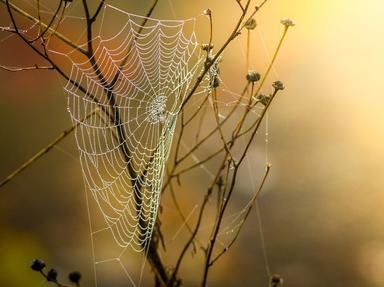
Arachnids of the World, Unite! Quiz
Arachnids are invertebrates characterised by a two-segmented body and eight legs. Can you identify the arachnids in this list of creepy-crawlies?
A collection quiz
by looney_tunes.
Estimated time: 3 mins.
- Home
- »
- Quizzes
- »
- Animal Trivia
- »
- Invertebrates
- »
- Arachnids